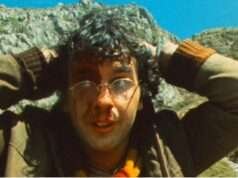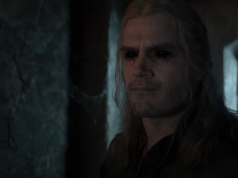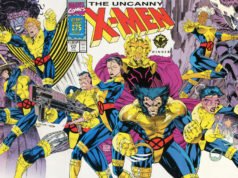Nostalgia and the Age of Technology
by Bethany Rose
On a personal blog, I once wrote about nostalgia, particularly how the memories of a now defunct local video store would often bring me waves of nostalgia. Those waves came crashing back in a different way when I learned that a number of shows I love(d) are either highly likely or already confirmed to be revived in some way. The X-Files, Full House, The Muppet Show, Twin Peaks, Coach, those are just some of the titles I’ve recently read about. Not too long ago Boy Meets World was resurrected as Girl Meets World, a sequel to the original, with its main characters Cory and Topanga grown up and raising daughter Riley, the show’s Girl. Some of these shows are still in the rumor phase (like Full House), while others are being touted as limited series (like The X-Files).
Television revivals aren’t a completely new concept. I’ve never seen a full episode of Leave it to Beaver, but I did watch every episode of The New Leave it to Beaver, which began its run around 20 years after Leave it to Beaver ended. But it seems like instead of one or two shows seeing the light of day again, this concept is catching on as the newest trend. The proliferation of television resurrections was not something I looked upon favorably. For shows like Full House and Coach, I don’t really want to know what the characters have been up to for the past decade. I’m not saying I haven’t thought about it, but I like that I can create my own conclusions after series finales, particularly those finales that either didn’t seem final (like the Michelle gets amnesia ending of Full House) or those I didn’t like (Coach Fox decides to leave his cushy NFL job to be a family man [even though he was already doing a fine job of balancing work and family life] in the finale of Coach).
But there is another issue I have about these renewals, and that problem brings about another disturbing trend. The more I think about it, the more I feel that current technology, specifically the Internet and media streaming sites, are slowly killing nostalgia. On the heels of two trending stories that were both about old commercials that have been rediscovered and now redistributed like wildfire on the Internet, I thought it fitting to write about some of the ways I feel nostalgia, as I know it, is dying: Nothing Ever Dies OK, so maybe nostalgia is dying but it is precisely because nothing else is. As much as it pains me to see a favorite show die, it is a feeling I’ve grown accustomed to. Every Fall, I eagerly check out some new shows, hoping I will find my next Psych, or Tales from the Crypt, or Seinfeld. One of those shows that I can’t imagine ever ending, that I look forward to every week, that I can quote or recite trivia about, often unprompted.
*****
While I wouldn’t count Full House or Coach among my all-time favorite shows, I still watched both series from start to finish, and I’ve probably seen every episode of the former at least five times. But even when one of my favorite shows ends, I go through my five stages of grief and then move on. In fact, I do such a good job of moving on that after a certain point, I couldn’t imagine being interested in the show’s resurrection. That isn’t to say that I’m not always completely turned off by revisiting the characters. I’d say one of the most successful reunions was when the cast of Seinfeld made a “new” episode of the show on another one of my favorite shows, Curb Your Enthusiasm. Like most seasons of the show, the story of the Seinfeld reunion wasn’t so much an actual reunion as it was that season’s running joke. Still, a couple years ago if a show ended I knew that was it. Maybe I’d see the characters in a special or movie, but that was it. Now, who knows, maybe I shouldn’t be sad that Happy Endings was canceled too soon because it will one day be back because nothing ever ends anymore! I remember being furious when Pushing Daisies was canceled. I thought the show was lovely and heartfelt, while still incorporating a dash of whimsical macabre.
Long before Daisies, I lamented the short life of Nightmare Cafe. And these, along with Happy Endings, are only a few in a long line of shows I feel ended too soon. Yet, if two years after Nightmare Cafe had ended, there had been a website or streaming service that decided to give the show a second season, I don’t know if I’d be on board. I loved Arrested Development, and I was one of the many fans left blue at its cancellation, but years later when it found a home for season 4 at Netflix, I didn’t make it past two of the new episodes. It’s like experiencing Freud’s “uncanny.” There was something familiar about it, but there was something that wasn’t right, something unfamiliar. I imagine it is much like a character in a work of fiction who finds their best friend is now a zombie, or their neighbor is a robot. I’m not necessarily going to run through the streets shouting, “They’re here already! You’re next!” à la Invasion of the Body Snatchers, but I do look at shows brought back from cancellation (and I should note, not those immediately brought back, but when there are some years between finale and renewal) in an unsure way. While the show trend is disturbing, a more Bradburian trend is the macabre idea that it is in any way OK and interesting to see dead musicians “perform” at concerts via holograms. Even Montresor had the dignity to exclaim “In pace requiescat” at the end of “The Cask of Amontillado,” and he’d just admitted to burying Fortunato alive! Before Adam Yauch died, he had the foresight to include a stipulation in his will that prohibited the use of his music and artistic property for advertising purposes after his death (link). I don’t know if that covers future performances by an Adam Yauch hologram, but I’d like to think it does. What I don’t like to think is that this idea, that you would have to have some type of “No Hologram” clause in your will, is becoming a reality. I never got to see a live Selena performance, and I am truly saddened by her murder, but even if she “toured” as a hologram, and I went to see it, I would still never have seen a live Selena performance. Just think about that.
Childhood Memories are Now Available in Convenient List Form
I used to collect Pogs. I know that you could use them to play a game, but I never learned how. I did, however, have an amazing Mortal Kombat Pog that I bought during my sixth grade field trip to D.C., when I am sure my mother was hoping I’d come back with some copies of historical documents or other keepsakes that proved I’d actually been to D.C. I also owned slap bracelets, fanny packs, and a number of other once trendy toys and fashion pieces that fell by the wayside. I also loved to read, and owned my fair share of Fear Street, Sweet Valley, and Babysitter’s Club books. I would talk about these books with my friends while we were enjoying a nice Crystal Pepsi and eating Dunk-a-roos. Just look at all the retro in this paragraph. Now search for any of these terms and don’t be surprised to find them appear in numerous lists of “retro reads” or “’90s trends,” etc. While my friends and I were using the Internet during the early 2000s, we rarely used it when we didn’t have to. So outside of emailing a professor or looking up names of actors on IMDb, we mostly communicated, learned, and discovered in one of the “old-fashioned” ways. So if I was having lunch with one of my friends and one of us asked, “Remember Teddy Ruxpin?,” the other would usually reply with a laugh and a bit of surprise, realizing that until the name was said aloud, we actually had started to forget it, or at least compartmentalize it into a part of our brain we rarely accessed. I haven’t felt the need to ask a friend if she recalls a certain trend in a long time. My memories have been cataloged and now a random writer on a random website can shout “Remember when!” instead.
Easy Access Equals the Loss of Excitement
When I was probably seven or eight years old, my mom asked me to collect any of my unwanted toys to put in a yard sale. I went to yard sales all the time with my parents, and I was always disappointed when the toy or book sections were lacking or nonexistent, so it was my goal to offer more than just the dregs of my closet. In the sale pile went my Sweet Secrets “hairbrush.” Sweet Secrets were aptly named because each item transformed into a surprising second item. The hairbrush was red with white plastic bristles and a large jewel in the handle. But the jewel was also a doll and the brush was also a car. It was a great toy I was sure would bring another kid lots of happiness. I went to bed feeling pleased as punch. When I woke up the next morning, I bolted out of bed, rushed outside, and asked my mom where the brush was. I had seller’s remorse. The brush was gone. I. Was. Devastated.
Fast forward to the age of online shopping, and I searched for the brush. First, I had to remember what the toy was called (I kept thinking “Keep” instead of “Sweet” Secrets). Once I found that, thanks to a search for popular ’80s toys, I found a handful of Sweet Secrets brushes for sale, none of which would cost more than $10 with shipping. There it was, the object I’d dreamed of for over a decade, at my fingertips. I might even be buying the same one I’d sold! But I didn’t buy one. I still haven’t. I probably never will, at least not on the Internet. But if I were walking through a flea market and saw the brush, well, I’d probably buy it in an instant. So what’s the difference? To me, it was like another childhood memory, that of our feather pillows. Probably around the time I lost my beloved toy, I discovered that all of the pillows in our house had feathers in them. I made this discovery after getting pricked by a quill. I pulled on the quill and very slowly a feather emerged from the cloth. I was fascinated. I searched for another quill, found one, and was pleased to see the same result. I repeated this process until I could find no more quills. Not one to give up easily, I checked the other pillows in the house and continued my new obsession. I also found that after a good night’s rest, more quills would emerge and I could begin the process again. After awhile, I grew impatient. The quills weren’t emerging fast enough. So I eventually decided to expedite the process. I grabbed scissors, snipped a small corner off the end of one pillow, and voila!, I had a feather factory. I reached into the opening and scooped out a clump of feathers. I was immediately disappointed. The clump wasn’t nearly as attractive as the single down feather. Though ruffled and not as traditionally beautiful as a full feather, each down feather’s emergence had been exciting. The unattractive clump was lackluster and I immediately regretted my action (and not even because I knew I was bound to get in trouble for cutting open a pillow). When I found the Sweet Secrets brush on the Internet, I was staring at a pile of down feathers. I can now watch entire shows in a weekend. I can download my favorite childhood book series. Life is easier. But with this ease comes the loss of excitement, and that loss could be killing nostalgia.
When I was younger I could only dream of having so much access to films and pop culture. I would search for books on the subjects, gulping up as much information as I could in one sitting. I used to be the girl everyone went to for movie news, ideas, and trivia. Nobody has to go to me for this information anymore. In the day when all my friends have smart phones, tablets, and pc’s, it’s like we have full access to Willy Wonka’s glorious candy factory. It’s just that I feel less like Charlie Bucket and more like Veruca Salt.
Rants & Raves is an opportunity for writers to express opinions, wax poetic and share thoughts about entertainment, politics, life, or whatever else they feel like talking about. These are strictly writer opinions and do not necessarily reflect the viewpoints of INFLUX Magazine, but rather provide an outlet to express one’s ideas.







